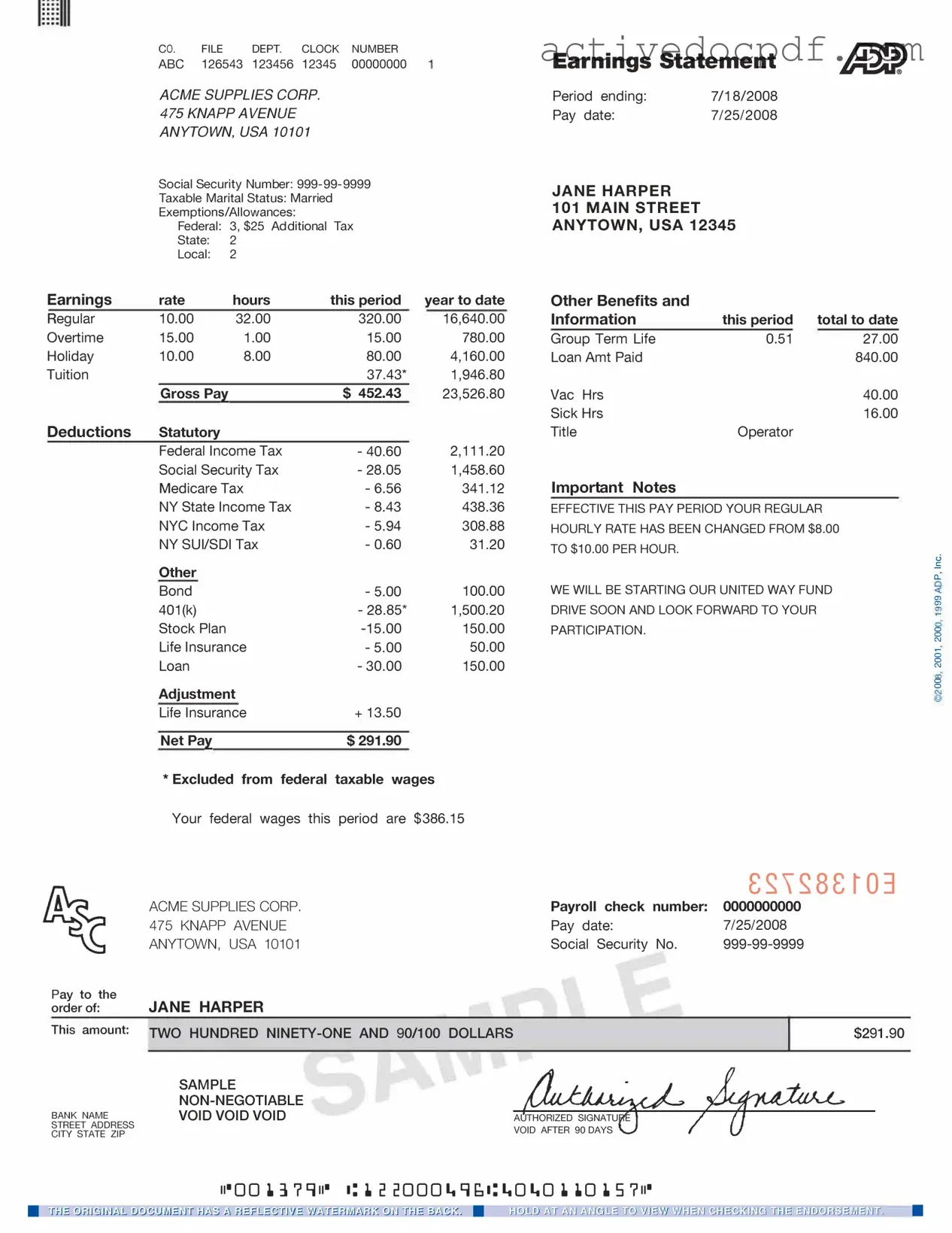Free Adp Pay Stub PDF Form
The ADP Pay Stub form is a document provided by ADP, a payroll processing company, that outlines an employee's earnings and deductions for a specific pay period. This form serves as a vital record for employees, detailing gross pay, net pay, and various deductions, such as taxes and benefits. Understanding this form is essential for managing personal finances and ensuring accuracy in payroll information.
Edit Form Online
